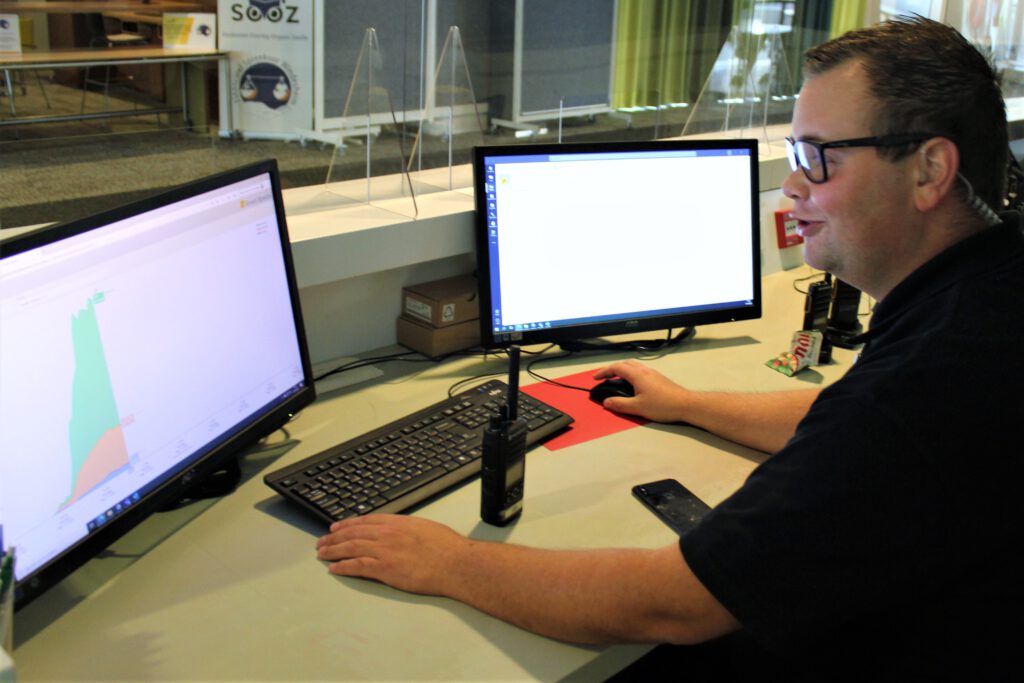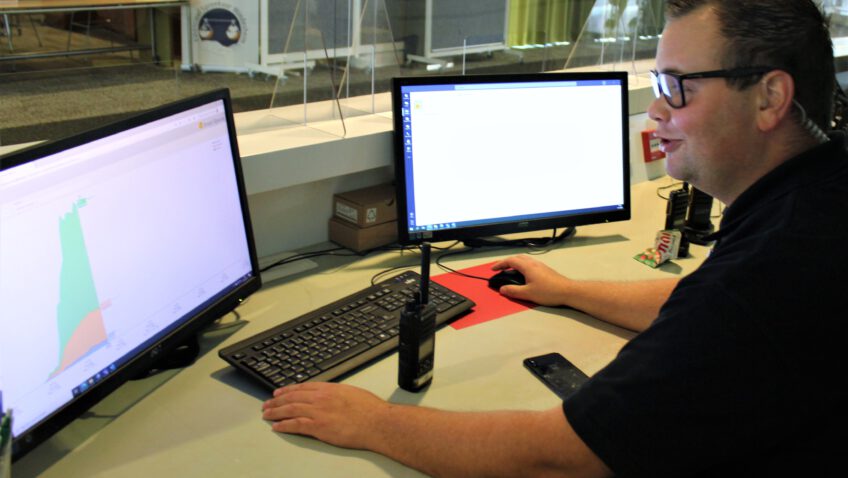Windesheim is monitoring the number of students and employees who have logged in at the servers via the WiFi access points. If that number is too large, security has to go and see what is going on.
The divisions IVT (ICT Operational services) and Housing have made a WiFi-dashboard as part of the corona measures, explain Rob Gort and Jan Visser of these divisions. The system has to contribute to the monitoring of the 1,5-meter rule that is active on campus.
As a result of the dashboard, the security can easily see on their computer how many students and employees are using the WiFi access points and in which buildings. They are even able to estimate per floor, per building how many people are present. If it is getting too crowded on a particular floor, the security can go and take a look to see what is going on.

Hired security
At the start of this semester, Windesheim has hired the security company Bloemink Security to make sure that the corona measures are maintained. One of the twelve security guards is checking the WiFi dashboard in the lobby of building X daily. If necessary, the security guard can ask his colleagues to check if everything is fine.
The maximum capacity of the Zwolle campus is four thousand students, this has been decided together with the Security Region IJsselland. Whoever is looking at the WiFi access points, can see that the amount of present people is way below four thousand. The highest amount was 2600 WiFi users, the maximum average was 1800 a day.
Privacy rules
They have calculated per floor how many people can be present in classrooms and hallways and still have 1,5 meter in between them. If the number of Wifi users is going up a floor the security can check the movement via the security cameras and take a look.
Gort expresses: “The dashboard is complacent to the privacy rules. The system is not following people but numbers and does not record anything but the necessary data. It is a tool for the security guards, so they can evaluate if a situation is or isn’t corona proof.”
More technical systems
Visser explains that there are more technical systems Windesheim could use for corona monitoring. “It was a coincidence that we were already working on a pilot system with sensors in the ceilings, to monitor the occupation of classrooms. The corona workgroup has asked us to research how else we could use those sensors as well.” Our system uses sensors that count using camera`s (anonymously) how many people occupy one classroom and where they are seated. “We are not using this system yet, but we could in theory also use the sensors to signal that too many people are sitting to close in a classroom or on a floor.”
Another pilot Windesheim could possibly use is a booking system in which flex spaces can be reserved centrally. This could then indicate if there are reserved too many large groups in one building.
